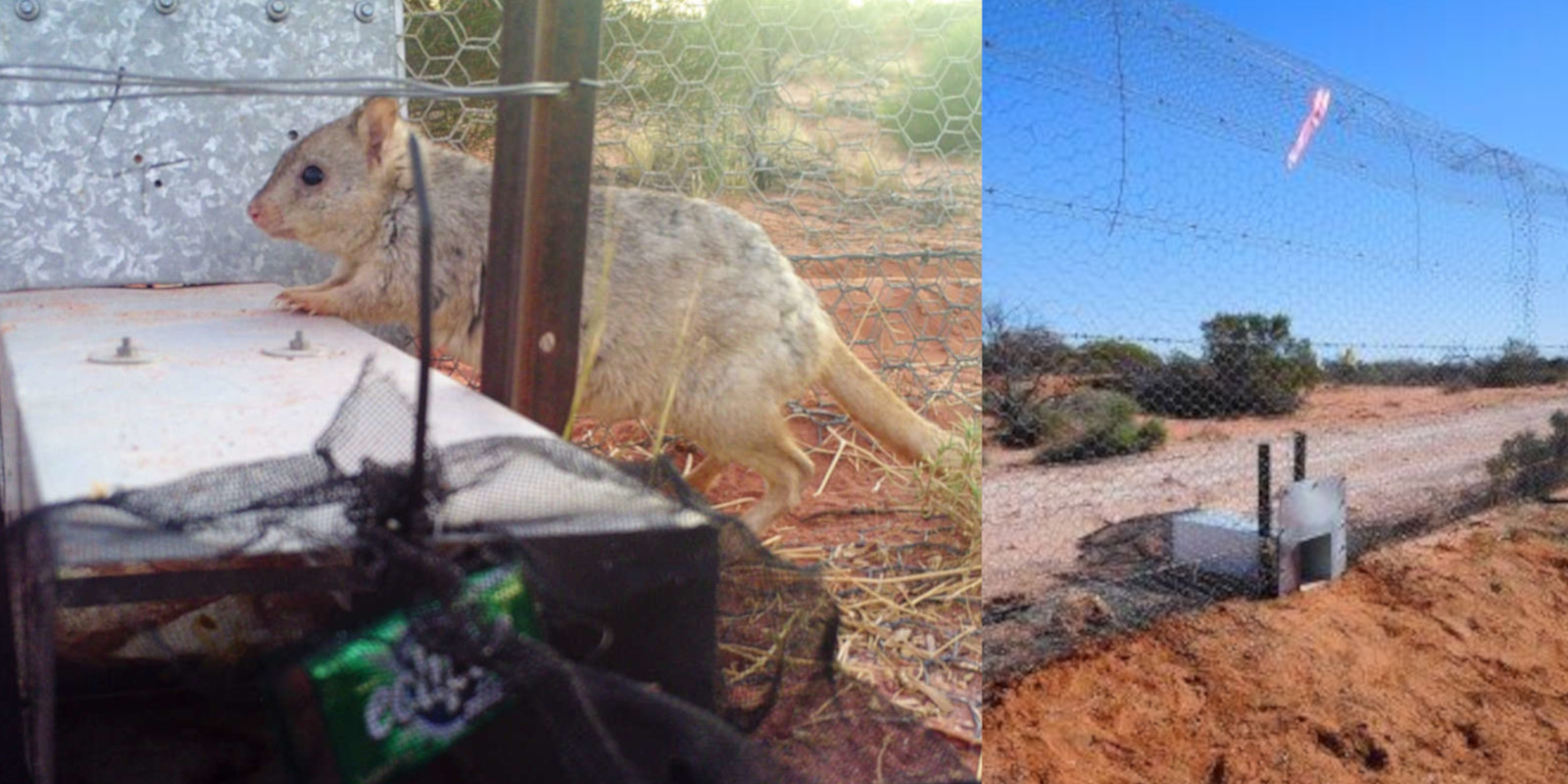Burrowing Bettong
Burrowing bettongs are one of Australia’s most endangered animals. They have thrived at Arid Recovery, for better and for worse

The burrowing bettong was once one of the most widespread Australian mammals, but now it occupies a mere 0.01% of its former territory, confined to three isolated islands
In 1999/2000 Arid Recovery introduced 29 burrowing bettongs (Bettongia lesueur) from Bernier Island and Heirisson Prong in WA. Since this successful reintroduction, Arid Recovery has taken the lead in researching the behaviour and ecology of these vulnerable mammals, contributing valuable insights to conservation efforts across Australia.
WHAT HAS ARID RECOVERY LEARNT?
You can have too many burrowing bettongs
Without predation from feral cats and foxes or competition from rabbits, the population of burrowing bettongs within the reserve exploded , and approximately 8000 indviduals in 2016. The rapid population boom of burrowing bettongs in the reserve has resulted in over-browsing of vegetation and may have impacted other species within the reserve such as the greater stick-nest rat.
Arid Recovery has implemented one-way gates which enable burrowing bettongs to naturally disperse outside the reserve. The gates are designed to limit usage by other species and are accompanied by intensive feral predator control to give the burrowing bettongs the best chance of surviving. Camera traps were placed at each gate to see how many bettongs were leaving and whether other animals were using the gates. In 2018 western quoll were reintroduced to the reserve to serve as a native mammalian predator that may play a very important role regulating prey populations, including bettongs. We have recorded quolls hunting bettongs and regularly find bettong fur in analyses of quoll scats which suggests that they are doing their job.

Bettongs are an extremely easy animal to trap and their inquisitive nature makes them an easy target for feral cats and foxes. This makes it almost impossible to establish burrowing bettongs beyond the fence. UNSW, in collaboration with Arid Recovery, has developed a project ‘Tackling Prey- Naivety’ to improve the anti-predator responses of burrowing bettongs to cats and foxes. The project has seen positive results, with burrowing bettongs able to survive and breed while living alongside low densities of cats in one of Arid Recovery’s experimental enclosures. Even more encouraging, bettongs have shown signs of becoming more wary of predators.
We have a thriving and genetically healthy burrowing bettong population
Reintroduced animal populations such often face challenges related to genetic diversity, which can impact their long-term survival. In 1999, Arid Recovery reintroduced 29 bettongs from two island populations. Eighteen years later, researchers compared the genetic diversity between the founding island populations and the reintroduced bettongs at the reserve. Despite starting with a small population, the burrowing bettongs showed almost a two-fold increase in genetic diversity compared with the burrowing bettongs from the two island populations. This research highlights how blending together populations from different sources can be a powerful tool in safeguarding endangered species. By mixing various groups, we can reduce the risk of inbreeding and boost the species' ability to adapt and thrive in their environment.
.jpg?lang=en-AU)
Burrowing bettongs are the only member of the kangaroo family that burrow underground.
They live in matriarchal social groups and communicate by
making clicking and fart noises with their mouth
SPECIES PROFILE
Range and abundance: The burrowing bettong was once one of the most widespread Australian mammals. It was found across arid and semi-arid zones in WA, SA, western NSW and Victoria. By 1863, the burrowing bettong had disappeared from Victoria, and by 1942 the last specimen was collected on mainland Australia. There are reports by Aboriginal people that they may have survived until the late 1950s in the desert regions of SA. The burrowing bettong is now only found naturally on four islands off the coast of WA. It has been successfully re-introduced to predator-proof enclosures in WA, SA and NSW.
Shelter: The burrowing bettong shelters in a burrow during the day. The burrows are often complex and can have multiple entrances and inter-connected passages. Many individuals may live within the warren. Bettongs have a matriarchal society, with one dominant female, her daughters and subordinate males occupying the warren.
Feeding: The burrowing bettongs at Arid Recovery eat a variety of foods, including leaves, seeds, roots and insects. During dry times, burrowing bettongs will eat the bark and roots of plants to obtain moisture.
Breeding: Burrowing bettongs have a single baby, which lives in the mother’s pouch for 115 days. They can breed all year round and up to three young may be raised within one year. Breeding is only paused if it has been a particularly dry period.
Threats: The rapid disappearance of burrowing bettongs from the mainland appears to be due to predation by foxes and feral cats. Other factors include competition with rabbits for food and shelter, hunting and poisoning by early farmers, and the removal of the bettong’s habitat for pasture and crops. Burrowing bettongs are listed as vulnerable on the national list of Threatened Species.